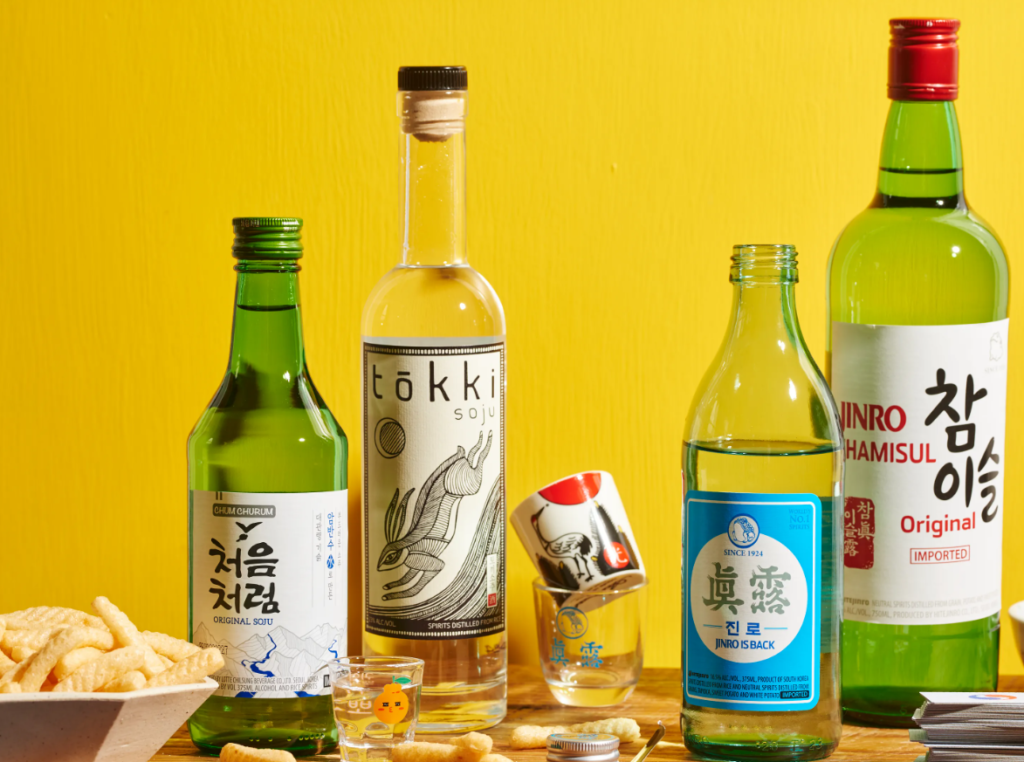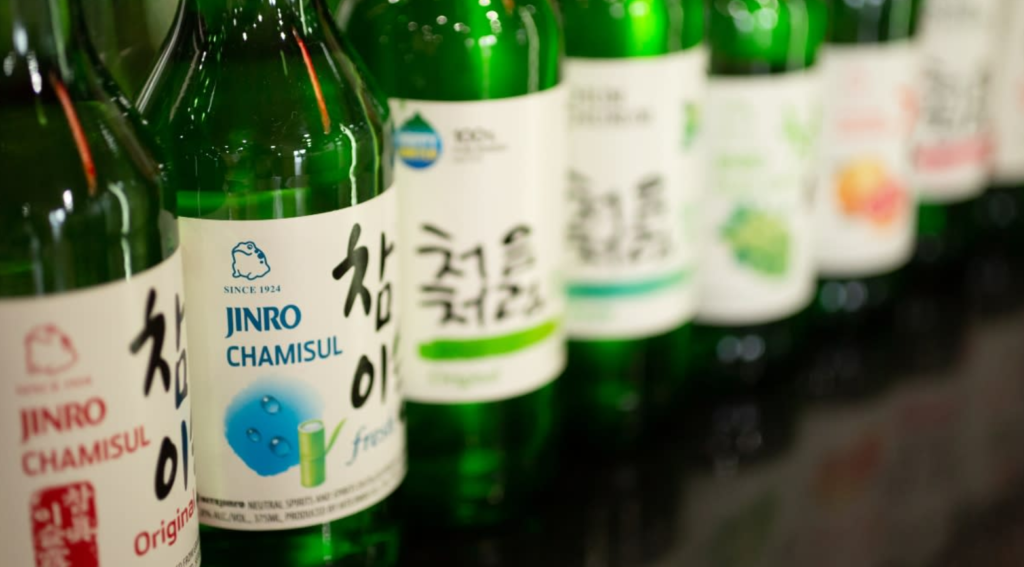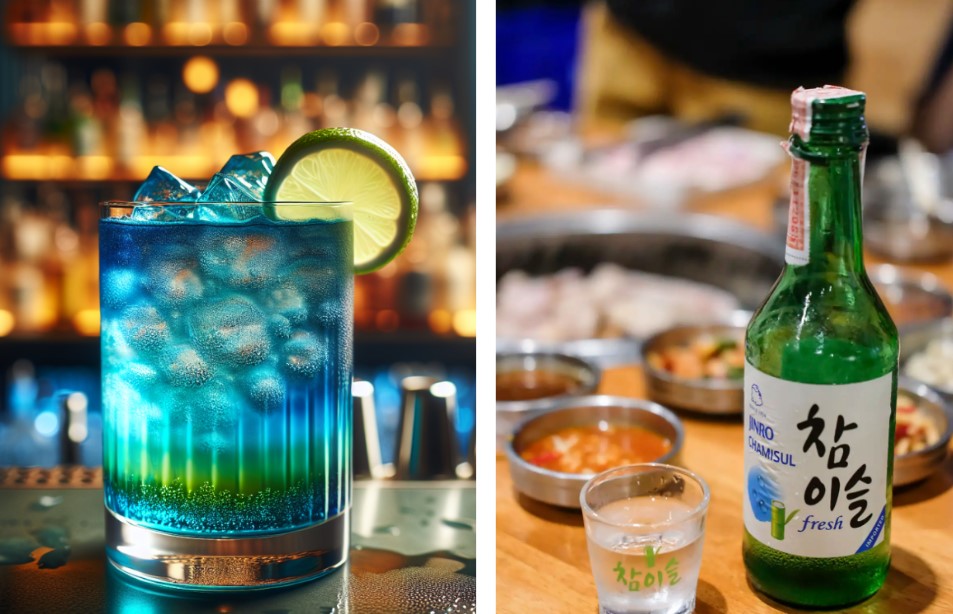Soju, a staple of Korean culture, is one of the most iconic and widely consumed alcoholic beverages in the world. Known for its smooth taste and versatility, it holds a special place in Korean traditions, celebrations, and daily life. Whether enjoyed neat, mixed in cocktails, or paired with delicious dishes, Soju is more than just a drink—it’s a cultural phenomenon that has captivated the world.
Quick Bio
| Feature | Details |
|---|---|
| Name | Soju |
| Type | Distilled alcoholic beverage |
| Origin | Korea |
| First Produced | 13th Century |
| Traditional Ingredients | Rice, Barley, Wheat |
| Modern Ingredients | Sweet Potatoes, Tapioca |
| Alcohol Content | 16-25% |
| Popular Variants | Flavored Soju (Peach, Grapefruit, Apple, etc.) |
| Cultural Significance | Symbol of Korean hospitality and togetherness |
| Global Popularity | World’s most-sold spirit |
Who is Soju? The Story Behind the Name

Soju is a clear distilled liquor that originated in Korea and is often referred to as the country’s national drink. Its name translates to “burned liquor,” which reflects the traditional distillation process involving heat. What makes Soju unique is its adaptability—it can be mild or strong, plain or flavored, traditional or modern, depending on the occasion and the drinker’s preference. With its moderate alcohol content, it strikes a balance between stronger spirits and lighter beverages, making it accessible and enjoyable for a variety of palates.
The Origins of Soju
Historical Roots of Soju
The story of Soju begins in the 13th century, during the Mongol invasions of Korea. The Mongols introduced the distillation techniques they had learned from the Persians, bringing the concept of “arak” (a Middle Eastern liquor) to the Korean Peninsula. Over time, Koreans adapted these methods to produce their own version of distilled liquor using local grains like rice, barley, and wheat. Thus, Soju was born as a uniquely Korean creation.
How Traditional Distillation Was Introduced
Initially, Soju was a luxury item enjoyed by the upper class due to the complexity of its production. It became more accessible to the general population as distillation methods were refined. Today, while modern Soju is widely available, artisanal distilleries still preserve the traditional recipes, offering a taste of history in every sip.
The Evolution of Soju Through Time

Soju has undergone significant changes over the centuries. Traditionally, it was made exclusively from rice. However, during the mid-20th century, a government-imposed rice shortage prompted producers to experiment with alternative ingredients like sweet potatoes and tapioca, leading to the creation of diluted Soju. This new version, with a lower alcohol content and more affordable production cost, became the dominant form of Soju available today.
In recent years, flavored Soju has emerged as a popular variation, appealing to younger generations and international audiences. From peach to grapefruit and even yogurt, these modern twists highlight Soju’s versatility and ability to adapt to changing tastes.
What is Soju Made Of?
Traditional Ingredients
Historically, Soju was distilled using rice, barley, or wheat, which gave it a rich and slightly earthy flavor. These grains were fermented and distilled into a potent, flavorful spirit.
Modern Ingredients
In contemporary production, especially for mass-market brands, Soju is often made with sweet potatoes, tapioca, or other starches. These ingredients are cheaper and more readily available, contributing to the drink’s affordability. Some brands even add a small amount of sugar or flavoring to enhance its taste.
The Distillation Process of Soju
The process of making Soju involves fermentation and distillation. Here’s a simplified breakdown:
- Fermentation: Grains or starches are fermented with yeast to produce alcohol.
- Distillation: The alcohol is then distilled to separate it from impurities, resulting in a higher concentration of alcohol.
- Dilution: For most modern Soju, the distilled liquor is diluted with water to reduce the alcohol content, making it smoother and easier to drink.
Traditional Soju is distilled only once, retaining a richer and fuller flavor. In contrast, mass-produced Soju often undergoes additional processing to achieve its characteristic mild taste.
Types of Soju: Traditional vs. Modern
Traditional Soju
- Made using traditional distillation methods.
- Often has a higher alcohol content (around 20-25%).
- Rich, earthy, and slightly complex in flavor.
Modern Soju
- Includes diluted Soju and flavored varieties.
- Lower alcohol content (16-19%), making it lighter and more accessible.
- Flavored Soju comes in fruity options like grape, peach, and green apple, catering to younger drinkers.
Both types have their charm, but modern Soju is undoubtedly more popular due to its accessibility and variety.
How is Soju Consumed? Korean Drinking Etiquette

Drinking Soju in Korea comes with a rich set of traditions and etiquette. Here are some key aspects:
- Pouring and Receiving: Soju is poured and received with both hands as a sign of respect, especially when drinking with elders or superiors.
- Toasts and Cheers: A typical toast is “Geonbae!”, which means “Cheers!”
- Never Pour for Yourself: It’s considered impolite to pour your own drink—always pour for others, and they’ll do the same for you.
This etiquette reflects the importance of community and respect in Korean culture, making the act of drinking Soju a meaningful social experience.
Soju’s Role in Korean Culture
Soju is more than a drink—it’s a cultural symbol. It represents togetherness and is often consumed during celebrations, holidays, and gatherings. Whether it’s a casual meal with friends or a formal family event, Soju plays a central role in fostering connections and creating memories. Its affordability and ubiquity make it accessible to people from all walks of life.
Soju Around the World: Global Popularity
Did you know that Soju is the world’s most-sold spirit? Its global popularity surpasses even vodka and whiskey. Initially limited to Korean communities abroad, Soju has now gained traction in countries like the United States, Japan, and China. The rise of Korean pop culture, including K-pop and K-dramas, has played a significant role in introducing Soju to international audiences.
Health Facts About Soju
While Soju is a beloved drink, it’s important to consume it responsibly. Here are some quick facts:
- Alcohol Content: Typically ranges from 16% to 25%, depending on the brand and type.
- Calories: Around 60-80 calories per shot (50 ml).
- Health Tip: Pair Soju with water or food to pace your drinking and avoid dehydration.
Moderation is key to enjoying Soju while minimizing health risks.
How to Pair Soju with Food
Soju’s versatility makes it an excellent pairing for a wide range of dishes. Here are some popular combinations:
- Korean BBQ: The smoky, savory flavors of grilled meats complement Soju’s clean, smooth taste.
- Seafood: Fresh or spicy seafood dishes pair wonderfully with Soju.
- Anju (Korean Bar Snacks): Dried squid, kimchi pancakes, or fried chicken are classic choices.
For a modern twist, try pairing flavored Soju with desserts like cheesecake or fruit platters.
Flavored Soju: A New Trend
Flavored Soju has taken the market by storm, especially among younger drinkers and international fans. Popular flavors include peach, grapefruit, and green grape, which add a fruity sweetness to the drink. These lighter, more approachable options have broadened Soju’s appeal, making it a trendy choice for casual gatherings and parties.
Conclusion
Soju is not just a drink—it’s a reflection of Korea’s rich history, culture, and sense of community. From its humble beginnings in the 13th century to its global popularity today, Soju has evolved while maintaining its essence as a versatile and beloved spirit. Whether you enjoy it traditionally or experiment with modern flavors, Soju remains a drink that brings people together and celebrates life’s moments, big and small.
Faqs
What is Soju made of?
Soju is traditionally made from rice, barley, or wheat, but modern versions often use sweet potatoes or tapioca. These ingredients are distilled or diluted to create its smooth and mild flavor. Some brands add sugar or flavoring for extra sweetness.
What is the alcohol content of Soju?
Soju typically has an alcohol content of 16-25%, depending on the brand and type. Flavored Soju usually has a lower alcohol percentage, making it a lighter option for casual drinking.
How should I drink Soju?
Soju is best enjoyed neat in small shot glasses, following Korean etiquette: pour and receive with both hands. You can also mix it into cocktails or pair it with foods like Korean BBQ or seafood.
Why is Soju so popular worldwide?
Soju is popular because of its affordable price, smooth taste, and versatility. Its rise in global popularity is also fueled by the influence of Korean culture, including K-pop and K-dramas.
What are the most popular Soju flavors?
Aside from classic Soju, flavored varieties like peach, grapefruit, green grape, and apple are highly popular. These fruity options are sweeter and appeal to younger drinkers and first-time Soju enthusiasts.
Visit For More Information Go To:- Tribune Media
